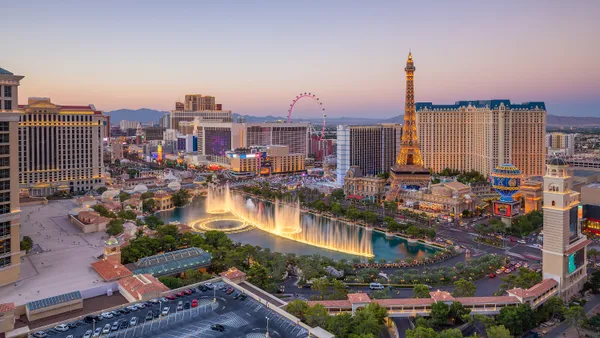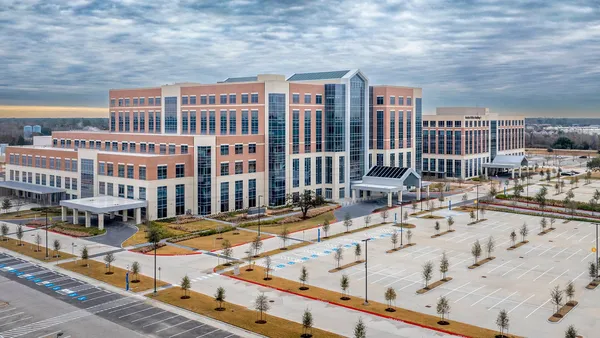Dive Brief:
- New York City Mayor Bill de Blasio has introduced the city’s $14 billion Green New Deal as part of a plan to reduce greenhouse emissions 30% by 2030. Some of the measures are severe, including a ban on all-glass skyscrapers.
- De Blasio outlined his goals in the “OneNYC 2050: Building a Strong and Fair City” strategy report. Actions the city will take include: investing in construction of community parks and development of open spaces; creating or preserving 300,000 affordable housing units by 2026; passing new emissions legislation for buildings more than 25,000 square feet in size; advancing resilient construction projects; installing 1 million square feet of heat-resistant rooftop coatings; and updating building codes to combat the effects of sea level rise. The overall initiative includes a mandate that all new buildings roofs are topped with either plants, solar panels or wind turbines.
- The plan also seeks to increase the number of underrepresented New Yorkers working in the construction industry and, according to the press release accompanying de Blasio’s announcement, "create tens of thousands of good-paying jobs retrofitting buildings and expanding renewable energy."
Dive Insight:
During an interview on MSNBC, de Blasio underscored the contribution that New York City's buildings make to greenhouse emissions and said the new rules would ban inefficient “classic glass and steel skyscrapers.” De Blasio is also looking to owners of existing buildings to retrofit their structures and make them more environmentally friendly. If they do not comply with the mayor’s 2030 goals, they could face fines of $1 million or more. De Blasio said the city is the first major metro in the world to force owners to pursue energy efficiencies for existing buildings.
Under a measure passed April 18, New York City will require owners of existing buildings to make their systems — lighting, heating and cooling and insulation – more energy efficient. The total cost of making these changes could reach as high as $4 billion, but city officials expect building owners to recoup some of that through energy savings. Owners of large buildings — more than 25,000 square feet — must reduce their emissions by 40% by 2030 and by 80% by 2050.
So while it will be challenging — and expensive — to retrofit New York City’s high-rises for increased energy efficiency, it’s not impossible. In Chicago, for instance, the 40-year-old, 110-story Willis Tower’s green facelift is expected to reduce energy use by 30% and has qualified the building for LEED Gold certification. It also is the largest office building to earn Energy Star certification. Some of the structure's changes include: installation of high-efficiency lighting systems; improvements to the HVAC system; upgrades of all four of the building’s cooling towers; and updates to electrical infrastructure.














